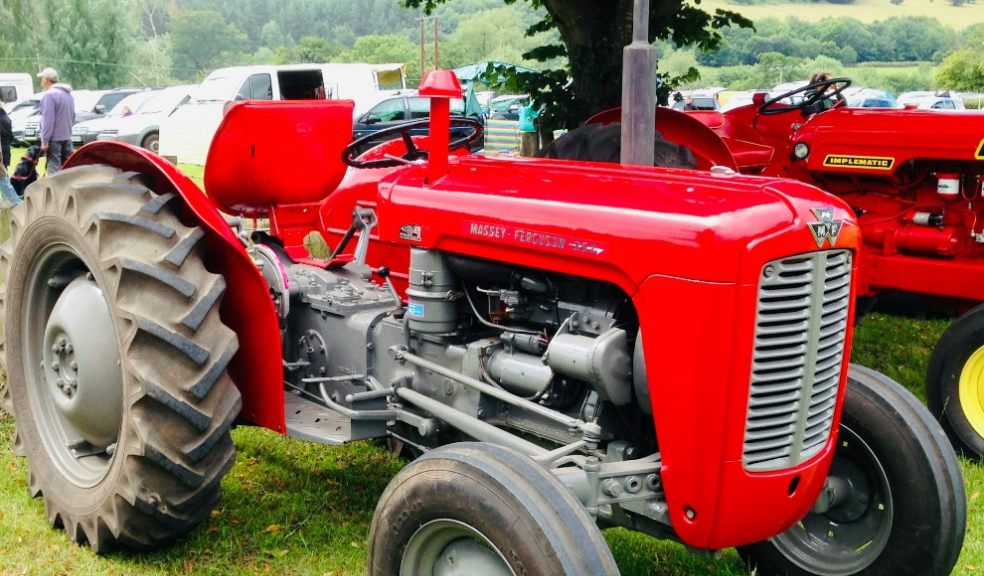
Sourcing Authentic Parts for Vintage Massey Ferguson Tractors
Restoring a vintage Massey Ferguson tractor is a satisfying pursuit for enthusiasts, farmers, and collectors alike. These iconic machines, known for their durability and straightforward engineering, hold a special place in agricultural history. But no matter how skilled you are with a wrench or how meticulous your restoration plans may be, one of the biggest challenges in any project is sourcing authentic and reliable replacement parts.
Vintage tractors can be decades old, and parts for certain models—especially those no longer in production—are not always easy to come by. Whether you're working on a classic MF 35, MF 135, or an older TE20, finding the right components is critical to ensuring your tractor runs properly, looks original, and lasts for years to come.
The first step in sourcing parts is identifying exactly what you need. This may sound obvious, but many restorers jump straight into the parts hunt without thoroughly assessing their tractor's condition. Begin with a complete inspection and make a list of worn, broken, or missing components. Take note of part numbers when available—many Massey Ferguson parts are stamped or labelled. Having accurate information about the model and serial number of your tractor is essential, as it helps determine compatible components, especially for machines produced across multiple years with subtle differences.
Once your needs are clear, it's time to begin the search. Original Equipment Manufacturer (OEM) parts are often preferred by restorers seeking authenticity and reliability. These parts are either made by or licensed by Massey Ferguson and are designed to meet the exact specifications of the original components. OEM parts tend to fit better, last longer, and retain the value of the restored tractor. However, they can sometimes be more expensive or harder to locate.
This is where reputable aftermarket suppliers can play a vital role. Some third-party manufacturers produce high-quality components that are compatible with vintage Massey Ferguson models. When choosing aftermarket parts, it's important to buy from trusted suppliers who understand the specifications and standards of the original equipment. Poorly made aftermarket parts can lead to fitment issues, reduced performance, or premature failure.
For many restorers, online platforms offer a convenient way to find both OEM and high-quality aftermarket parts. Dedicated websites often stock thousands of components, from engine rebuild kits and fuel pumps to decals and electrical harnesses. Among the most reliable and specialized sources is Masseyparts, a supplier that focuses specifically on Massey Ferguson tractors. In the middle of a complex restoration project, having a one-stop-shop simplifies the process. Their catalogue includes parts for a wide range of vintage models, complete with technical details, diagrams, and support to ensure compatibility. This is especially useful for restorers working on less common models or machines with limited documentation.
While online ordering is popular, traditional methods of sourcing parts should not be overlooked. Tractor salvage yards, especially those specializing in agricultural equipment, can be goldmines for rare or discontinued components. You might find an entire donor tractor available for a reasonable price. However, always inspect used parts for wear and damage—reusing heavily worn components can compromise the reliability of your restoration.
Local tractor shows, swap meets, and vintage equipment clubs are also excellent places to find parts and make connections with fellow enthusiasts. Not only can you pick up hard-to-find items, but you can also gain valuable advice from experienced restorers who’ve tackled similar challenges. Sometimes, a conversation at a show can lead to discovering a private seller with the exact part you’ve been searching for.
When purchasing parts—whether new, used, or reproduced—documentation is key. Keep a detailed record of every component you replace, including where it was purchased and any warranties that apply. Take photos during disassembly and reassembly, especially of wiring and hydraulic systems. These records will be invaluable if issues arise later or if you ever choose to sell the restored tractor.
Another factor to consider is whether you’ll need any specialized tools for installing your parts. Some components, such as bearings, seals, or clutches, may require specific tools or procedures. Research installation requirements before ordering, and plan ahead so your project doesn’t stall while you wait for a needed tool or manual.
Sourcing parts for a vintage Massey Ferguson tractor requires diligence, patience, and a little creativity. But with modern tools, knowledgeable supplier and a strong community of enthusiasts, restorers today are better equipped than ever to track down the components they need. The reward is a tractor that doesn’t just run like new—it becomes a living piece of history, brought back to life with care, precision, and passion.













